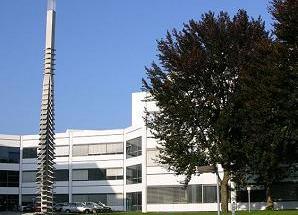|
PLM Interest Group |
|||||||||||||||||||||||||||||||||||||||||||||||||||||||||||||
|
|
|
|
|||||||||||||||||||||||||||||||||||||||||||||||||||||||||||
|
|
|
|||||||||||||||||||||||||||||||||||||||||||||||||||||||||||
|
|
|
|
|||||||||||||||||||||||||||||||||||||||||||||||||||||||||||
|
PLM Standardisation
'Standardisation' vs 'Standards' There is a difference between ‘Standards’ (which are formal, documented specifications of what can happen); and ‘Standardisation’ (which is a continual drive towards common best practices).
Many might think that standardisation in PLM is long overdue. PLM Standardisation does not mean: “making everyone in the company work in the same way as each other”. There may be many reasons why people in different parts of the organisation, or in different countries, or in different subsidiaries or sister companies, should work in slightly different ways to each other. However, different ways of working normally include ineffective ways of working; and the differences and inconsistencies can waste time, effort and resources. The goal of PLM Standardisation is to establish, document and implement a mixed set of standardisation elements that eliminate this waste, and reinforce best practice. Within each implementation there is always a drive to improve performance, and so internal rules and procedures will have been established that attempt to rationalise the way that people work. Capturing and optimising these is a way to benefit from PLM standardisation. At a company level, it involves the capture and documentation of all your internal best practices into a framework that is well-defined enough to be applied right across the enterprise. ‘PLM Standardisation’ is therefore the creation of an effective, balanced and practical environment, in which current ways of working are optimised, and from which future ways of working can be improved. For mature and successful PLM implementations, it is one of the easiest ways to generate additional improvement for a relatively small amount of effort. The Basics
PLM knowledge and methods should be formalised into internal standards that are practical and flexible. These need to be:-
PLM standards lead to more faster and more effective working, and embedding "right first time" practices. PLMIG Initiative
The PLMIG ran a Workshop Series in 5 European cities to establish the scope, potential and methodology for PLM Standardisation.
The results are summarised in the Methodology below, and participants identified the following drivers and areas where Standardisation will provide benefits. Drivers for Standardisation
PLM standardisation enables user companies to save the massive amounts of effort that are wasted in rationalising PLM across geographies, subsidiaries, and the customer/supply chain. It also "farms" the internal best practices that can make a PLM implementation so effective. Internal Drivers
External Drivers
Methodology
There is no standard structure for a PLM implementation. Every organisation's PLM environment is different; and so the elements that should be standardised will also be different. Even within a single industry, every company that implements PLM does so in its own way, in response to its own operational drivers and constraints. This means that even the best PLM implementation is a "one off" - a unique composition of PLM ideas, methods and software that, however well it has been constructed, is entirely bespoke. If PLM were a product, then the first prototype would be production engineered into something that is easier to make and that requires less effort to do so. For PLM, this is done by Standardisation. Fortunately, there is a standardised methodology for actioning this bespoke activity - in other words, though each company's internal PLM standardisation is specific to itself, the method of applying the standardisation is general best practice. PLM Standardisation Manual
This methodology has been encapsulated in the PLM Standardisation Manual. An optimal level of PLM standardisation needs to apply across the whole company or organisation; along the supply chain; and with customers. These all place different demands on the standardisation process, and call for an intelligent approach from the PLM Team.
PLM Standardisation does not mean: "making everyone in the company work in the same way as each other". There may be many reasons why people in different parts of the organisation, or in different countries, or in different subsidiaries or sister companies, should work in slightly different ways to each other. However, different ways of working normally include ineffective ways of working; and the differences and inconsistencies can waste time, effort and resources. 'PLM Standardisation' is therefore the creation of an effective, balanced and practical environment, in which current ways of working are optimised, and from which future ways of working can be improved. Standardisation is a continual drive towards common, proven best practices; and is one of the cheapest and most effective ways of improving a mature PLM implementation. The target scenario is one in which this optimal level of standardisation is devised, documented, applied, and continually improved. PLMIG Standards
Although this page has been talking about Standardisation, it is worth mentioning the three PLM Standards that have been developed by the PLMIG that derive from its other work. These apply to three very specific, and very different, situations where accuracy and consistency are required:-
Each of these is covered separately, and more details can be found by following the bullet point links above. Find Out More
The PLM Standardisation Handbook is provided with Q&A support to PLMIG Members, so you will receive a copy if you join with any class of Membership. Alternatively, you may buy hard copies from Amazon. Direct and ongoing support can also be provided as part of the Mentoring option. For more information contact standardisation@plmig.com. © Copyright 2025 PLM Interest Group |
||||||||||||||||||||||||||||||||||||||||||||||||||||||||||||
| <<< Return Home | |||||||||||||||||||||||||||||||||||||||||||||||||||||||||||||
|
|
|
|
|||||||||||||||||||||||||||||||||||||||||||||||||||||||||||
|
|
|||||||||||||||||||||||||||||||||||||||||||||||||||||||||||||











